Fantasy tropes serve as the foundation of inventive storytelling, providing recognizable frames while allowing for creativity. From epic journeys to mythical monsters, these reoccurring themes generate a sense of wonder and adventure. Far from being cliché, tropes help authors connect with readers and lay the groundwork for innovative storytelling. When handled correctly, even the most hackneyed cliches may feel new and fascinating.
Classic Fantasy Tropes
The Chosen One
One of the most well-known fantasy tropes is The Chosen One, in which a character is chosen to fulfill a major prophecy or save the world. This cliché frequently features an ordinary person who realizes they possess remarkable skills or a unique fate. Examples are Harry Potter from Harry Potter and Frodo Baggins from The Lord of the Rings. This trope heightens the drama and tension, providing readers with a hero to root for as they embark on their epic quest.
Example: Harry Potter in J.K. Rowling’s Harry Potter series is the quintessential chosen one, marked by a prophecy and burdened with defeating Voldemort.
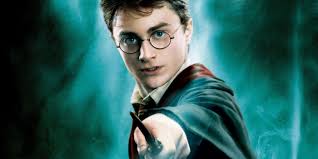
The Dark Lord
One of the most well-known fantasy tropes is the Dark Lord, a fearsome adversary who personifies ultimate evil and poses a substantial threat to the universe. This character is often veiled in mystery and commands massive armies or dark magic, driving much of the struggle in a fantasy novel. Examples include Sauron from The Lord of the Rings and Voldemort from Harry Potter. The Dark Lord archetype represents the conflict between good and evil, providing heroes with a definite foe to overcome.
Example: Sauron in J.R.R. Tolkien’s The Lord of the Rings epitomizes the Dark Lord, a malevolent force influencing the world through the One Ring.

You may also read: List of 10 Best Proofreading Softwares to Level Up Your Writing
Quest and Adventure Tropes
The Hero’s Journey
The Hero’s Journey is one of the most common quest themes in fantasy. It follows a protagonist who embarks on an epic journey, encounters obstacles, and grows through hardships. This framework frequently incorporates important stages such as the call to adventure, mentorship, hardships, and eventual victory. For example, J.R.R. Tolkien’s The Lord of the Rings depicts Frodo’s journey to destroy the One Ring, in which he overcomes personal and external challenges, signifying progress and heroism.
Example: Frodo’s perilous journey in The Lord of the Rings showcases this archetype, as he transitions from a humble hobbit to a world-saving hero.

The Magical Artifact
The magical artifact is a classic fantasy cliché that frequently appears in quests and adventures. Enchanted swords, antique amulets, and supernatural stones act as plot catalysts. They could bestow incredible power, conceal a secret, or provide the key to rescue a kingdom. Famous examples are the One Ring in The Lord of the Rings and the Elder Wand in Harry Potter. Such artifacts frequently test the characters’ courage and morality along the way.
Example: The One Ring in Tolkien’s saga is a classic magical artifact, embodying temptation and ultimate power.
You may also read: Character Backstory: Definition, Examples and Much More
Worldbuilding Tropes
Medieval-Inspired Settings
Medieval-inspired settings are a common worldbuilding motif in fantasy literature. These settings frequently include castles, knights, and towns, with a social structure modeled on monarchy or feudal regimes. Swords, armor, and magic are common features that evoke a sense of nostalgia for the past. Famous examples include The Lord of the Rings, in which protagonists travel through kingdoms and woodlands, and Game of Thrones, set in a medieval-style world filled with political intrigue and violence. These locales conjure adventure and epic journeys.
Example: George R.R. Martin’s Westeros in Game of Thrones draws heavily on medieval Europe, blending political intrigue with sword-and-sorcery.
Portal to Another World
A prominent worldbuilding motif in fantasy is the “Portal to Another World.” This trope involves characters moving from their normal world to an entirely different, usually magical domain. The portal could be a secret entrance, a magical object, or an unusual occurrence that transports the characters. Famous examples are The Chronicles of Narnia, where children enter a wardrobe to travel to a magical country, and Alice in Wonderland, where Alice falls through a rabbit hole into an incredible world. This trope paves the way for unlimited adventures and discoveries.
Example: C.S. Lewis’s The Chronicles of Narnia begins with children stumbling through a wardrobe into a magical land.
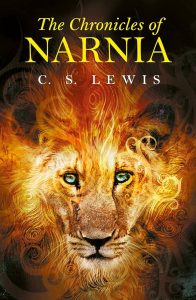
You may also like: What is External Conflict? Definition, Examples and Writing Tips
Magical Creatures and Beings
Dragons
Dragons are among the most recognizable magical creatures in fantasy fiction. These powerful, typically fire-breathing beings are frequently shown as fearsome and majestic, with scales, wings, and a strong affinity for magic. Dragons are sometimes portrayed as protectors of money or wisdom, yet they are also feared opponents. Dragons appear in masterpieces such as J.R.R. Tolkien’s The Hobbit and George R.R. Martin’s A Song of Ice and Fire, where they play important roles in the plots.
Example: Smaug in The Hobbit is a fearsome dragon guarding vast treasures.

Elves and Dwarves
Elves and dwarves are among the most popular fantasy creatures. Elves are sometimes represented as graceful, immortal beings with pointed ears and magical skills, renowned for their intelligence and beauty. Dwarves, on the other hand, are often shorter, stockier, and good at crafting and mining. They’re famed for their bravery and loyalty. These animals are crucial to many fantasy literature, like The Lord of the Rings, where elves represent grace and dwarves represent power and endurance.
Example: Legolas and Gimli in The Lord of the Rings highlight their differences while forging an unlikely friendship.

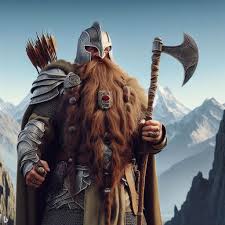
You may also read: Freytag Pyramid: Definition, Structure and Examples
Character Archetypes
The Mentor
The Mentor is a prominent character archetype in fantasy novels, often acting as a wise mentor or instructor for the protagonist. This figure usually has extensive experience or magical skills and can provide advice, training, or tools to help the hero succeed. Mentors can also offer emotional support, allowing the protagonist to grow and conquer obstacles. A well-known example is Gandalf from The Lord of the Rings, who guides Frodo Baggins on his trip. The Mentor archetype contributes to the hero’s competence and wisdom.
Example: Gandalf in The Lord of the Rings embodies the classic mentor, balancing guidance with a touch of mystery.

The Reluctant Hero
The reluctant hero is a popular character archetype in fantasy fiction. This hero is generally unwilling to embark on the hero’s journey or accept their destiny. They are frequently driven to act because to external circumstances, such as the danger of evil or a personal loss. Despite their reservations, they typically rise to the challenge and progress throughout the novel. Classic examples include Frodo Baggins in The Lord of the Rings and Harry Potter in the early volumes.
Example: Bilbo Baggins in The Hobbit prefers the comforts of home but rises to the occasion when adventure calls.
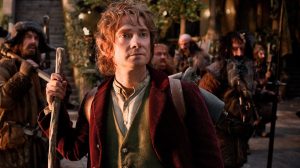
Themes and Conflict Tropes
Good vs. Evil
The “Good vs. Evil” narrative is a prominent topic in fantasy fiction. It contrasts morally virtuous persons, frequently heroes or saviors, with dark, evil forces that threaten peace and justice. This subject distinguishes between right and wrong, allowing readers to better comprehend the motivations of the characters. Classic examples include stories like The Lord of the Rings, in which the hero battles the dark lord Sauron. This theme propels the story and keeps readers interested in the conflict between light and darkness.
Example: Robert Jordan’s The Wheel of Time pits the forces of Light against the Dark One in an epic battle.

Forbidden Love
Forbidden Love is a popular fantasy trope where two characters fall in love, but their relationship is prohibited due to external factors such as societal rules, family expectations, or magical barriers. This causes significant emotional conflict as the lovers attempt to balance their feelings for each other with the consequences of breaking the rules. Classic examples include Romeo and Juliet, where the lovers’ families forbid their union, and many fantasy novels featuring star-crossed relationships between humans and magical beings.
Example: Aragorn and Arwen’s love in Tolkien’s work transcends race and mortality.
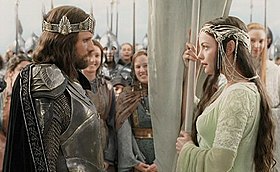
Subverting Fantasy Tropes
Antiheroes Instead of Heroes
In many fantasy stories, the protagonist is a typical hero: brave, selfless, and morally upright. However, some stories defy this convention by introducing antiheroes instead of heroes. Antiheroes are complicated characters who, although lacking standard heroic virtues like kindness or honesty, play an important role in the plot. These people are frequently motivated by personal reasons, making their acts more morally ambiguous. Popular examples include Geralt of Rivia from The Witcher series and Jon Snow from Game of Thrones.
Example: Geralt of Rivia in Andrzej Sapkowski’s The Witcher series exemplifies this, balancing personal ethics with survival.

You may also like: What is the Fourth Person Point of view? An Essential Guide
Unpredictable Villains
Unpredictable villains challenge the traditional “evil for the sake of evil” stereotype. Rather than being power-hungry or cruel, their motivations are multifaceted, and their acts may appear justifiable. For example, Loki from Thor is a trickster who alternates between hero and evil, keeping the audience guessing. Giving villains unique goals or redeeming characteristics makes stories less predictable, prompting readers to question morality and adding depth to the narrative.
Example: Magneto in X-Men fights for mutant rights, challenging traditional villain stereotypes.

Conclusion
Fantasy tropes survive because they connect with readers, providing familiarity while leaving possibility for creativity. Writers can give these classic components new life by adding distinctive twists that make their stories stand out.
Frequently Asked Questions
A trope is a recurring theme, concept, or motif in storytelling that creates recognizable patterns.
Not necessarily. Trope execution determines originality—fresh perspectives can make old ideas new again.
Books like The Witcher series and A Song of Ice and Fire are known for flipping traditional tropes on their heads.
They add unique twists, combine multiple tropes, or focus on character-driven storytelling.
Themes of moral ambiguity, diverse characters, and intricate worldbuilding are increasingly popular.
















